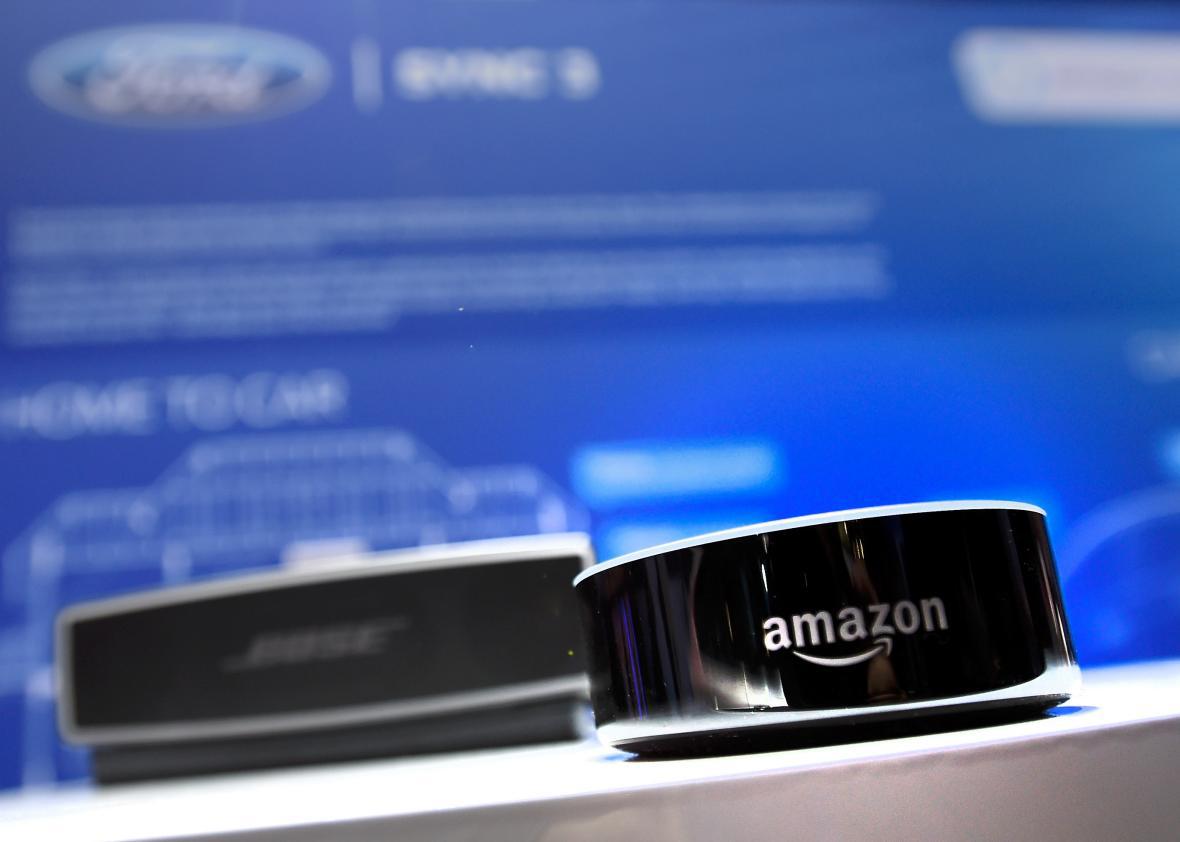Amazon’s virtual assistant Alexa is everywhere. Or at least it seems like it.
This week, she made her debut with high-end wireless speaker-maker Sonos, in the $200 Sonos One. Through a partnership with Amazon and GPS navigation leader Garmin, you can also use Alexa in the car now, with the $150 Garmin Speak. (While you can use the device for any typical Alexa query, it’s especially designed for guiding you to your destination hands- and distraction-free.) And in a blog post today, Intel announced that it would help make it easier for third-party companies to integrate Alexa into their smart home products through its Intel Voice Enablement Developer Kit.
“A quality voice interaction means devices identify the speaker’s location, mitigate and suppress ambient noise, and understand spoken commands on the mics, even while playing music,” Miles Kingston, Intel’s smart home group general manager, wrote in the company’s blog post. “There’s a lot of engineering involved in getting speech recognition at high degrees of speed and accuracy.”
Until now, Alexa’s mostly been a homebody. Amazon started with the Echo, a cylindrical smart home speaker that debuted in 2015. While it doesn’t look like much, the LED-ringed device works with a companion smartphone app to bring you customized news, music, jokes, sports stats, and more. All you have to do is ask.
Since then, Amazon has expanded the Echo line. It’s now six devices strong: There’s the pint-sized puck, the Echo Dot; an updated $99 Amazon Echo; the larger, smart home-centric Echo Plus; the Echo Spot, a round device with a screen for video chatting; the Chumby-like Echo Show, which can show you videos and song lyrics on its seven-inch screen; and the camera-laden Echo Look, designed to help you find and document your fashion stylings. In the living room, bedroom, and perhaps the kitchen, Amazon’s got your Alexa bases covered.
With this Intel announcement, though, developers will much more easily be able to add Alexa to their products. And between this and other partnerships, we’re going to start hearing Alexa in a variety of new places and situations. For instance:
The Bathroom
Let’s be real: I want some music during a shower. I also want to see the lyrics to the music I’m listening to (because you can’t expect me to remember the words to Tubthumping at 6 a.m.). So, the natural space for Alexa’s next home takeover is the bathroom. It will need to be waterproof, and it gives Amazon—or whatever third party ends up tackling this—a creative opportunity in designing a mount that positions the speaker where I won’t hit it with my arms or head, yet can also see my Chumbawumba lyrics.
Headphones
Maybe speakers aren’t your thing, or maybe you’re just too mobile for Alexa’s current stylings to suit your needs. Like Siri being built into Apple’s AirPods and the Google Assistant-imbued Pixelbuds, Alexa will come to headphones and earbuds. And she actually is: headphone-maker Bragi is adding Alexa to its The Dash and The Dash Pro models with a software update this month. A company called ONvocal is also working on a pair of earphones with Alexa built-in. The world is turning into a scene from Her.
The Kitchen
You can set an Echo in the kitchen—that’s where mine lives—but right now, it’s not truly optimized to be a culinary companion. Samsung, LG, and other kitchen appliance-makers have been adding screens, smart home connectivity, and app compatibility to their newest appliances for years, but the implementation has always felt awkward, or lacking in some way. With Alexa onboard, these “smart” appliances could finally integrate with the rest of your home gadgets in a way that makes sense. Imagine going to the grocery store and asking, “Alexa, do I need to buy more milk?” and she knows.
The House Itself
Is it listening? Yes, it’s always listening, because you built a home with an Alexa-based security system. (What were you thinking? This sounds like a security nightmare.) In truth, a variety of home security companies such as ADT already integrate with Alexa. You can use her to arm or disarm the system in your home, and control your lights, locks, and garage door. However, these security systems merely use Alexa (through the Alexa app and Echo products) as an additional means of control. It’s not built into the system itself. This still screams “nightmare” to me—imagine a thief breaking in, telling a virtual assistant to disarm, Alexa complying, and then proceeding to rob your home—but at least you can unplug an Echo.
Clearly, there’s room for Alexa’s presence to expand, both in your home, and out into the world. And with more third-party product integrations on the horizon, be prepared: We haven’t hit peak Alexa just yet. She’s going to make her way into scenarios that could be incredibly useful—like the kitchen—as well as ones that are far less so.
But mostly, I’m excited for the shower speaker.
